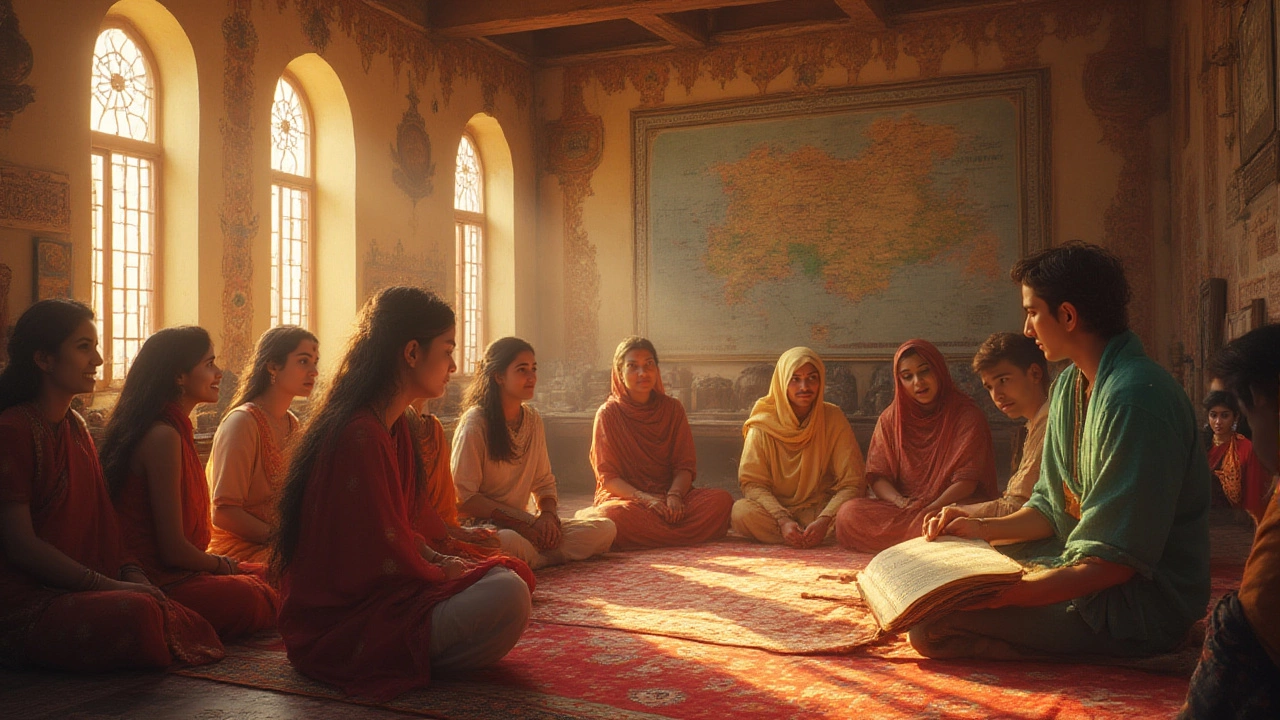
Indian Heritage and Culture: Exploring Its Subjects, Origins, and Modern Influence
Crack open the true subjects of Indian heritage and culture, discover their real-life applications, and see how they're taught and lived today.
India isn’t just a country; it’s a living tapestry of history, beliefs, and flavors. If you’re curious about what makes the subcontinent unique, you’re in the right spot. From the way people greet each other to the songs sung in remote villages, every detail tells a story about a shared past.
Understanding Indian heritage helps you connect with the people you meet, whether you’re traveling or chatting online. The traditions you see—like the colorful Pushkar Camel Fair or the reverence behind Vande Mataram—are not just events; they are living expressions of values that have shaped millions of lives. Knowing the background makes every experience richer, whether you’re tasting a spicy street snack or watching a folk dance.
India’s natural heritage is another big piece of the puzzle. Sites like the Western Ghats, a UNESCO natural heritage zone, showcase the country’s biodiversity and remind us that cultural pride often ties to the land. When you learn about these places, you also learn why locals protect them so fiercely.
Food is the fastest ambassador of culture. Dishes like dhokla, a fluffy snack from Gujarat, or a steaming bowl of biryani tell you where people live, what they farm, and which spices they love. Even the name of a garment—like the kurta pajama shorts—reflects regional history and climate.
Language and greetings are equally telling. While “hi” works in many places, a proper “Namaste” or a regional phrase shows respect and awareness. Business meetings, family gatherings, and casual chats all have their own etiquette, which can change from north to south.
Festivals act like a cultural calendar. The Pushkar Camel Fair, for example, mixes trade, religion, and entertainment in a way you won’t see elsewhere. Each festival highlights a different aspect of belief, from honoring ancestors to celebrating harvests.
Music and poetry keep traditions alive across generations. The oldest folk songs still echo in villages, and ancient poems like the Epic of Gilgamesh (though not Indian, it inspired early literary forms) remind us that storytelling is a universal human thread.
When you explore Indian heritage, start small. Try a local street food stall, ask someone how they greet guests, or watch a short video on a traditional dance. Those tiny steps add up to a deeper appreciation of a culture that balances ancient wisdom with modern hustle.
Remember, heritage isn’t a museum piece; it’s a daily practice. The next time you hear a funny quote or a powerful love line, think about how Indian poets use words to capture emotions that have traveled through centuries. That’s the magic of Indian culture—simple, vivid, and always welcoming you in.

Crack open the true subjects of Indian heritage and culture, discover their real-life applications, and see how they're taught and lived today.